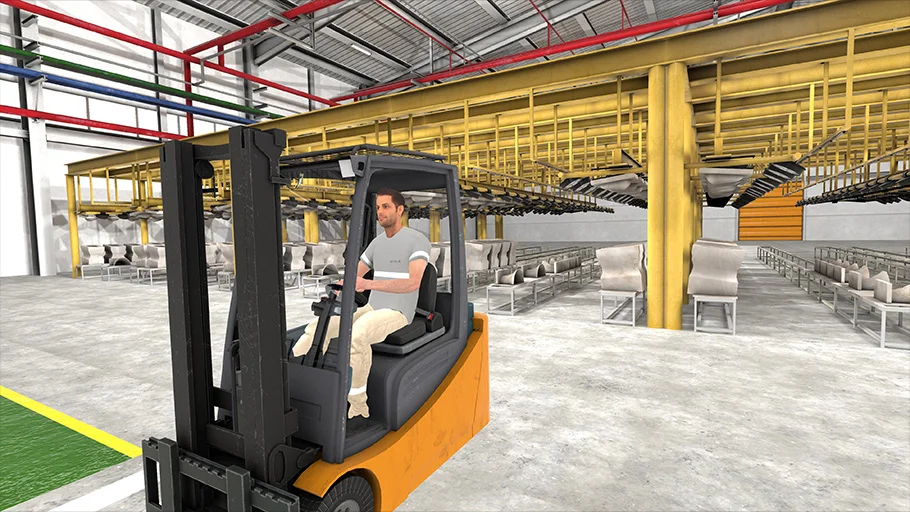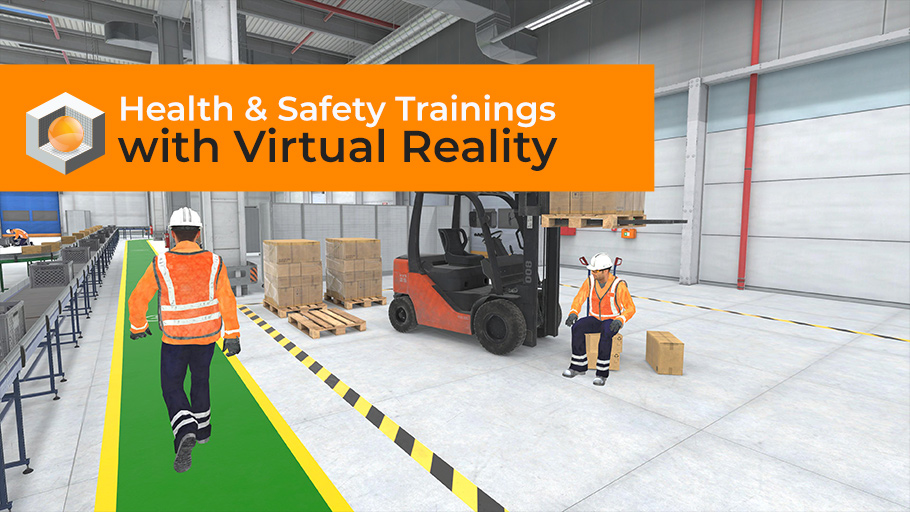Step to a Safer and More Efficient Future
Let’s say you are in charge of a large construction site. The safety of workers, keeping machinery and equipment in working order, ensuring that materials are on site on time and in sufficient quantity, and the security of all of these are your responsibility. It can be a great challenge. It will be done once in this big project, but you have to carry out a very dangerous crane operation. Imagine if there was an accident. People, equipment, materials, working environment, delivering the project on time… Everything is at risk.
If only your operators could try this process step by step and many times before performing this operation so that they could minimize the risks both in terms of consciousness level and the required operational skills while actually lifting the load. However, probably the dangerous load to be lifted should be assembled as soon as it enters the area. Besides, you cannot idle cranes for hours for this non-productive endeavor, and repeating this dangerous process step by step would not only be costly but also put your employees at extra risk.
Virtual Reality (VR) technology can give you that confidence!
In critical environments and with critical equipment, your operators can experience this operation over and over again in a virtual environment and learn the safest and most accurate method, long before your employees face these hazards, and long before your valuable cargo arrives on site. How good does that sound, right? And this is just one example… What can be done in the virtual world can only be limited by your imagination.
VR is revolutionizing occupational safety training, benefiting businesses and workers in many ways. In this article, we will focus on VR’s role in preventing work accidents and work-related diseases and provide detailed information on how this technology is transforming health and safety trainings.
Problems with Standard Training Methods:
Traditional workplace safety trainings are usually presented in a theoretical and passive manner. This, as we have all experienced, fails to engage employees and fails to provide lasting learning. In addition, these methods lead to some important problems:
- Lack of Interaction: Often employees are not actively involved in the training and do not have the opportunity to apply what they have learned in practice.
- Problem of Realism: Theoretical information and presentations do not accurately reflect real working environments and can make it difficult for workers to get a clear understanding of hazards.
- Lack of Practical Experience: Employees may have to step into the real working environment before they have the opportunity to put their theoretical knowledge into practice. This can lead to mistakes that can in the end cause accidents.
- Cost Problem: Companies may have to pay serious costs to solve the above-mentioned problems.
- Measurability Problem: It is difficult in traditional methods to measure how much the participants have learned and how effective the training is.

Benefits of Safety Training with VR:
VR makes occupational safety trainings more effective by solving many of the problems mentioned above:
- Interactive and Immersive Experience: VR places employees in a virtual work environment, allowing them to actively participate in the training. This creates a more motivated and engaging learning environment.
- Realistic Simulations: VR realistically simulates dangerous or complex work environments, allowing workers to anticipate potential hazards and learn how to react to them.
- Practical Skill Development: VR offers practical experiences that teach workers how to deal with dangerous situations. In this way, employees are better prepared for the real working environment.
- Data-based Evaluation: VR trainings make it possible to measure how effective the training is by tracking participants’ performance and progress.
Achieving Cost Benefits with VR
VR trainings also offer significant cost advantages to businesses in the long term:
- Reducing the Cost of Training Equipment: VR reduces the need for expensive training equipment, lowering the investment costs of businesses. Companies do not need to use valuable machinery and equipment, production lines, vehicles, etc. for non-productive training activities. Since the risks that occur in these activities will not be experienced in the VR environment, the cost of risk is significantly reduced.
- Reduction of Costs Arising from Work Accidents: As determined in many different studies, VR trainings play an active role in increasing the perception of occupational safety and reducing accidents, eliminating the costs caused by occupational accidents such as loss of qualified and trained personnel, stopping production, direct damage to valuable goods and materials.
- Productivity Increase: VR trainings save businesses time and money by transferring more information in less time and enabling employees to be more efficient on the job. It also allows machines and equipment to contribute to production instead of being used for training. Training can start while valuable equipment is still in the production or transportation phase so that commissioning takes much less time and productivity increases.
- Reduced Travel and Accommodation Costs: VR trainings eliminate travel and accommodation costs by enabling employees to receive training without the need to travel to different locations.
VR technology transforms workplace safety trainings, making them more effective, engaging, and measurable. In this way, it plays an important role in preventing work-related accidents and industrial diseases. It may be too early to rely solely on VR technologies in this regard. However, as of today, VR is an inclusive educational technology that can be used in conjunction with other methods such as traditional training methods, mentoring, and field training, while greatly increasing the efficiency of training and significantly reducing costs. We believe that with the development of VR technology in the future, it will take an even more important place in workplace safety trainings and provide more benefits to businesses and employees.

